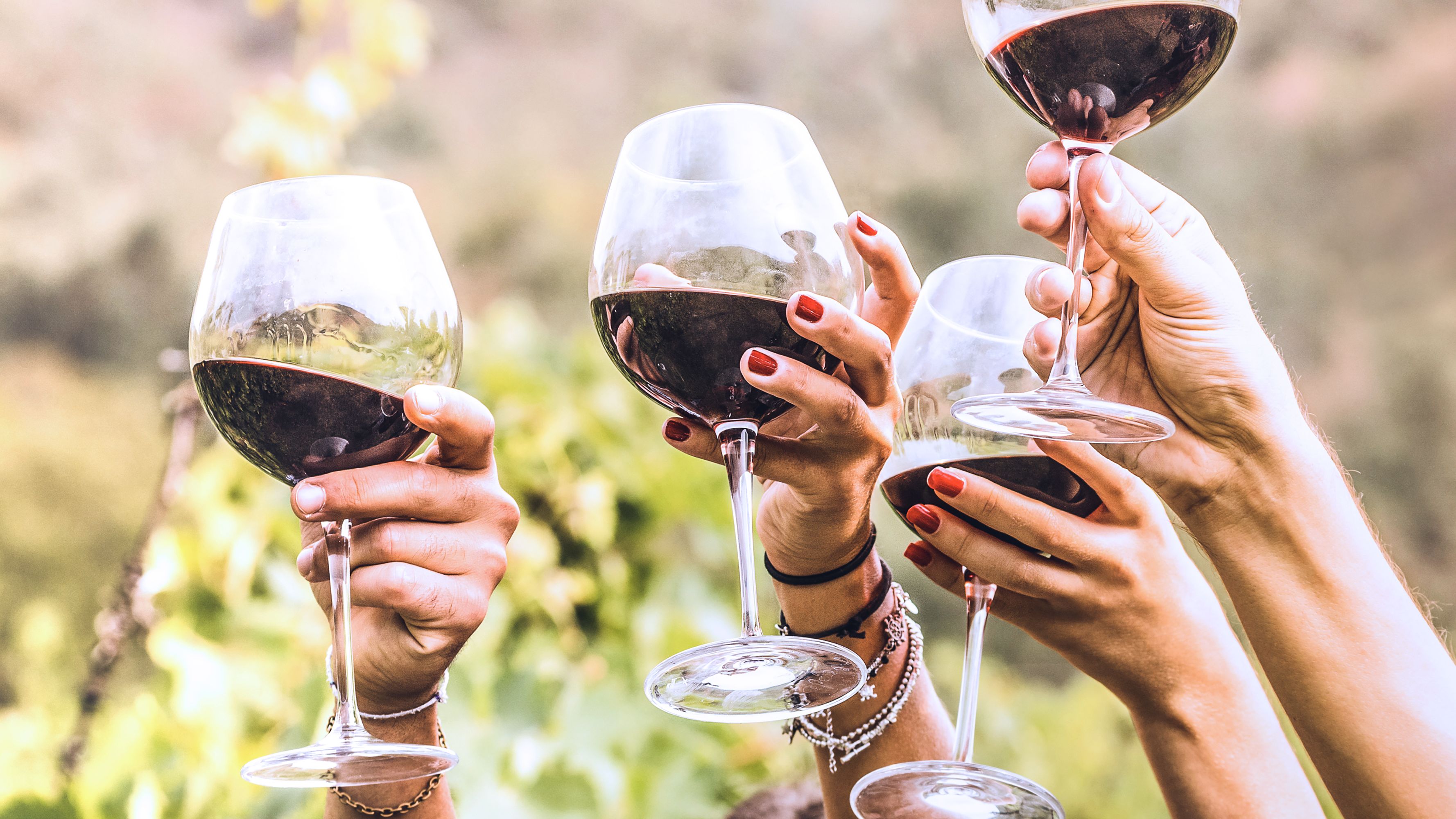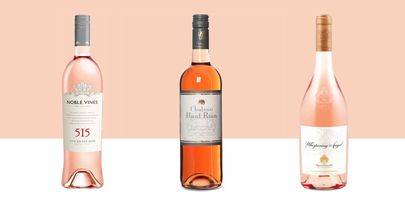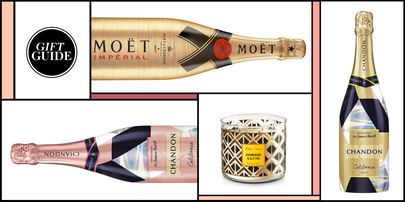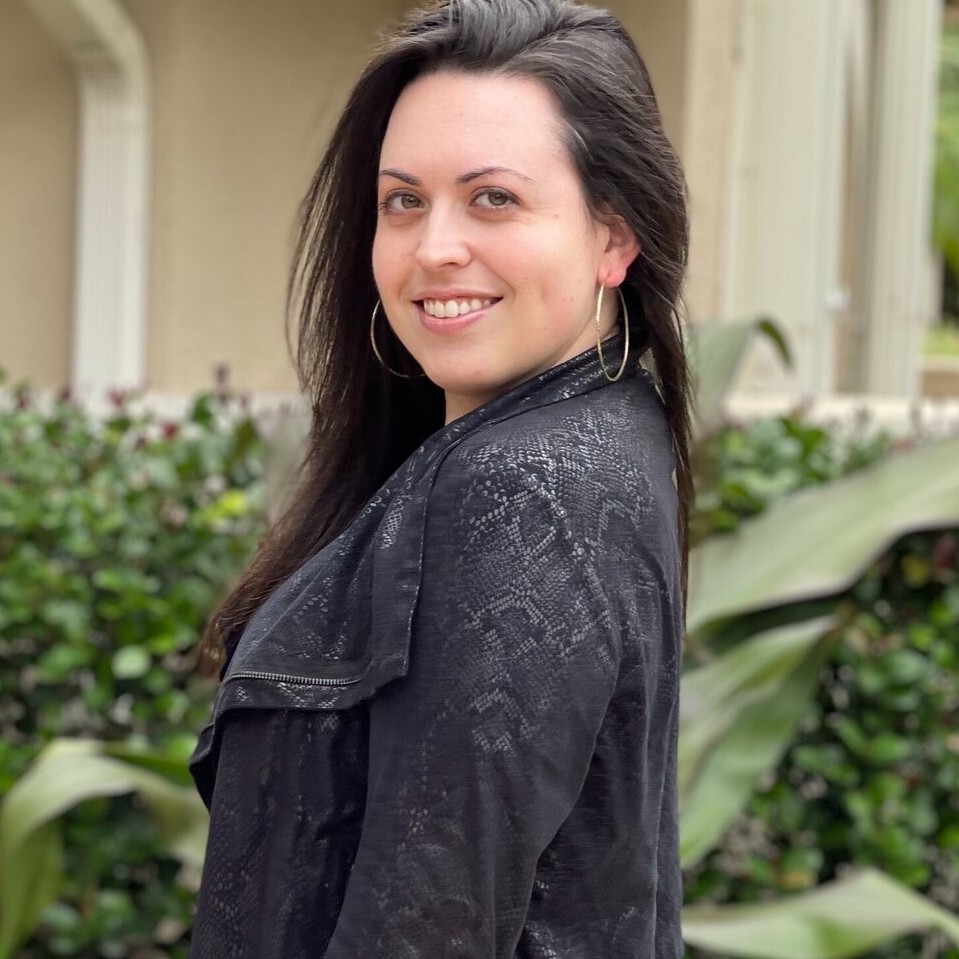How to Choose a Wine You'll Love—Every Time
The Mondavi sisters, born and raised in the Napa Valley wine industry, share their tips for finding your go-to bottle once and for all.


If you, like me, are clueless when it comes to choosing a bottle of wine (what's the difference between a Cabernet Sauvignon and Cabernet Franc? Will red wine stain my teeth? Can I just get a glass of frosé and call it a day?), you'll be happy to learn that it doesn't require a degree in viticulture to find a vino that speaks to you. All it takes is a little bit of expertise courtesy of Angelina, Alycia, Riana, and GiGi Mondavi—the fourth-generation sisters of the Mondavi family–owned California vineyard that's produced millions of premium Napa Valley wines.
This year, the Mondavi sisters became the first female honorary chairs for the 38th annual Auction Napa Valley, a charity wine event that has helped local nonprofits raise more than $180 million since 1981 for important causes like health insurance access for children and closing the academic achievement gap in Napa County. In 2018 alone, the event raised $13.6 million.
"The wine industry is male-dominated, so for us to be an all-women team (and the youngest!) was very symbolic," says Angelina Mondavi, 33, the eldest of the Mondavi sisters. "There are more women coming into the wine industry now than ever, and it's really giving us a voice—especially with everything that's going on in the country."
Since they were 10 years old, the sisters have spent their summers working in the labs, cellars, and tasting rooms at their family winery, which means they've learned a thing or two about great wine and how to find a bottle you really like. (Pro tip: Expensive wine isn't always better.)
Here, the sisters-slash-wine-connoisseurs share their best advice for finding a wine you love—whether you're ordering in a restaurant or hosting your next dinner party.
Tip #1: Don't be afraid to ask.
"When you're in a restaurant ask for a sommelier, a.k.a. a wine steward—that's what they're there for. They geek out on being able to help people and introduce them to something they might love," says Alycia Mondavi, 31, a marketing consultant who helped launch her family's wine brands Dark Matter and Aloft. "If you're in a retail shop, they're staffed with the most knowledgeable and credible people, as well. Ask them, rather than just grabbing something off the shelf after looking at a pretty or catchy label."
"In the wine industry, everybody wants to talk wine, share a wine, or introduce you to a wine they've completely fallen in love with. I think that's why we all love this industry and why we haven't deviated far from it. It's all about curating memories."
Get exclusive access to fashion and beauty trends, hot-off-the-press celebrity news, and more.
Tip #2: Host at-home tastings with friends.
"I know people who have monthly tasting groups where they basically tell everybody, 'This month, the theme is Napa' and everybody shows up with different Napa wines. Then you get a taste of each and share them. It's a great way to learn about different wines and producers," says Riana, 28, who works full-time for her family's first business, C. Mondavi & Family.
"Everybody does research on the bottle that they brought, so they can teach the group a little bit more about it. Ultimately, if you like it, you're going to keep drinking it. If not, there are so many different options and you can keep going out and trying more. Think of it like a book club, but for wine.
Tip #3: It's all about the food you're going to eat with it—or not.
Forget the rules about only drinking red wine with meat. It's all about the flavors you're willing to explore each season. "I consider myself a seasonal drinker, so I often lean towards red in the winter time," says GiGi, 23, the youngest Mondavi sister who works in investing and helps out with the family’s wine brands. "Once spring or summer hits, I become a Sauvignon blanc girl."
Here, Angelina shares her recommendations for food pairings with five popular types of wine:
Sauvignon blanc:
"Chicken or fish like halibut, salmon, cod, sushi, anything of that sort. For vegan lovers, I always say Sauvignon blanc tends to be on the easier side to find vegan-styled wines. Don't be afraid to ask the wine store owner or sommelier if the wine is actually vegan."
Chardonnay:
"Beautiful creamy pastas or even mussels and clams—anything with fish stalk. A caesar salad is really great with a chardonnay, or just a simple butter lettuce salad with a beautiful vinaigrette."
Chenin blanc:
"I look at some of the lighter meat styles, like pork, as a go-to. Something that's a little lighter."
Merlot:
"Napa Valley merlots tend to be really lush and beautiful. I would recommend pork, lamb, and beautiful cheeses to pair with this. You can eat beef with it as well, but I try to steer clear of it because merlot tends to be a little bit heavier, so it can be a mismatch sometimes."
Cabernet:
"I say beef all the way, as well as lamb and elk, venison—any of those gamey-er styles go really well. I find that the cabernet really cuts some of the fattier fish. For desserts, you can go all over the board, but for something like a flowerless chocolate cake or a chocolate soufflé, I also go for a cabernet."
"If you aren't pairing the wine with any food, choosing a bottle depends on what you're really craving," Angelina adds. "If it's a hot day, then maybe you want a Chenin Blanc, a Sauvignon Blanc, or a Chardonnay. During the winter months, often times you'll see people gravitate more towards the higher alcohol wines, such as a red wine like a Pinot Noir, a Cabernet, a Merlot, a Cabernet Franc. I also see people drinking chardonnays that tend to be oaked in the winter."
Tip #4: You can determine how light or heavy a wine is by the label.
"What makes a wine lighter or heavier has to do with how the wine maker actually procures the wine. Oak influence can make the wine heavier; if it's coming from stainless steel you know it's going to be a lighter style. The oak makes it much more difficult to pair with," Angelina says. "Almost always on the back of the label you'll see 'oak-ed' or 'stainless steel.'"
Tip #5: Older wines don't necessarily taste better.
"It's totally a myth. I'm drinking some 2016 bottles right now and they're amazing. I think it really depends on the producer and if they tend to make wines that need a little bit more time in the aging process (based on acidity and alcohol level)," explains Angelina.
"With the wines my sisters and I produce, we actually do the aging process for you, so when you get them they're ready to drink. That's just our style. We want to make an approachable wine when you get it—not have you buy it and it needs to be cellared for 10 years."
Extra Tip: If your teeth stain easily from red wine, reach for some white.
"I can drink a couple glasses of wine and hardly have any staining on my teeth," says Angelina, "but then I have friends that will drink one glass and it will stain theirs—it really just depends on how strong your teeth enamel is. If you have stained teeth from red wine, get a glass of Chardonnay or Sauvignon Blanc, because that white wine will help strip the color out.
More Wine Please


Rachel Epstein is a writer, editor, and content strategist based in New York City. Most recently, she was the Managing Editor at Coveteur, where she oversaw the site’s day-to-day editorial operations. Previously, she was an editor at Marie Claire, where she wrote and edited culture, politics, and lifestyle stories ranging from op-eds to profiles to ambitious packages. She also launched and managed the site’s virtual book club, #ReadWithMC. Offline, she’s likely watching a Heat game or finding a new coffee shop.
